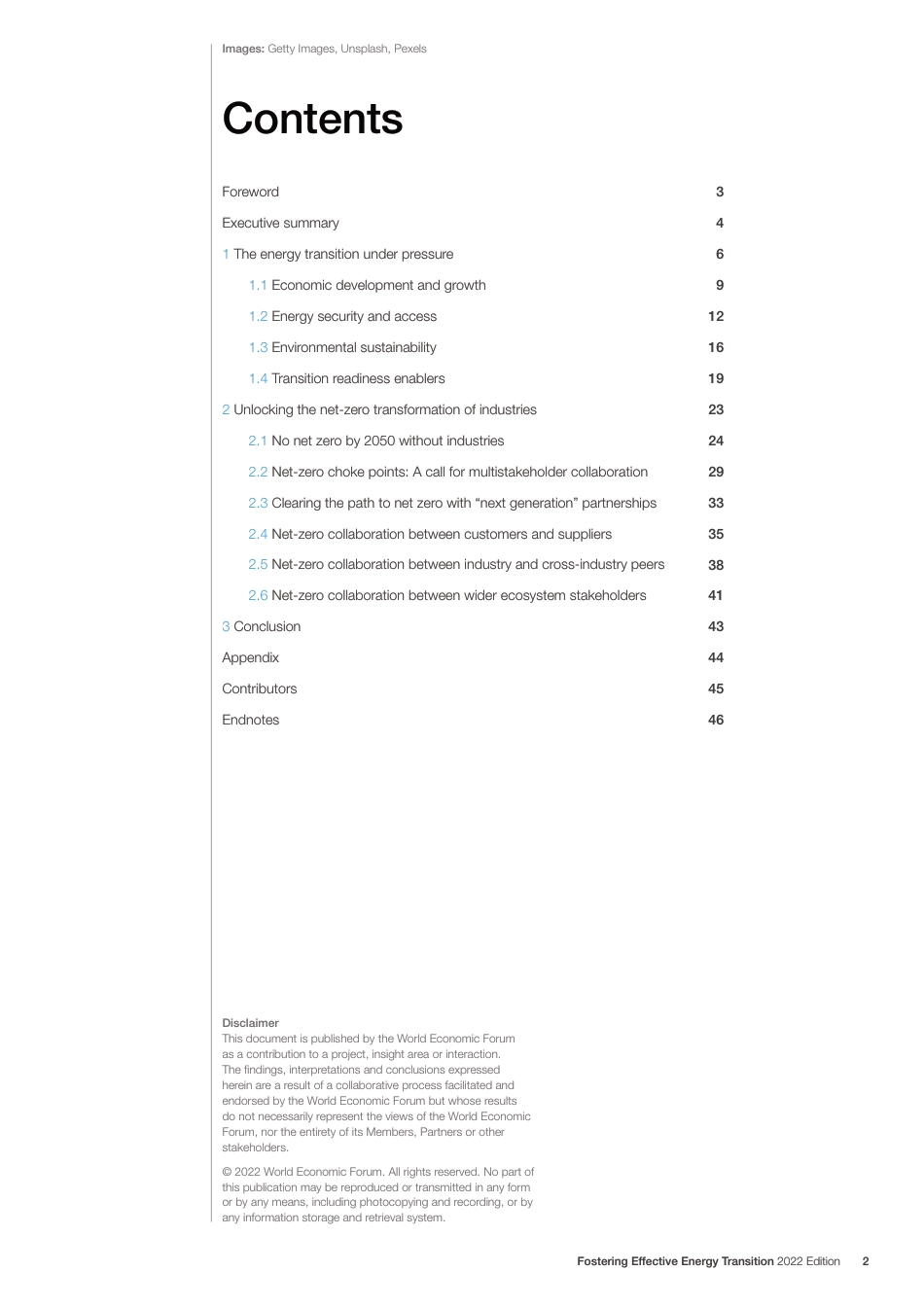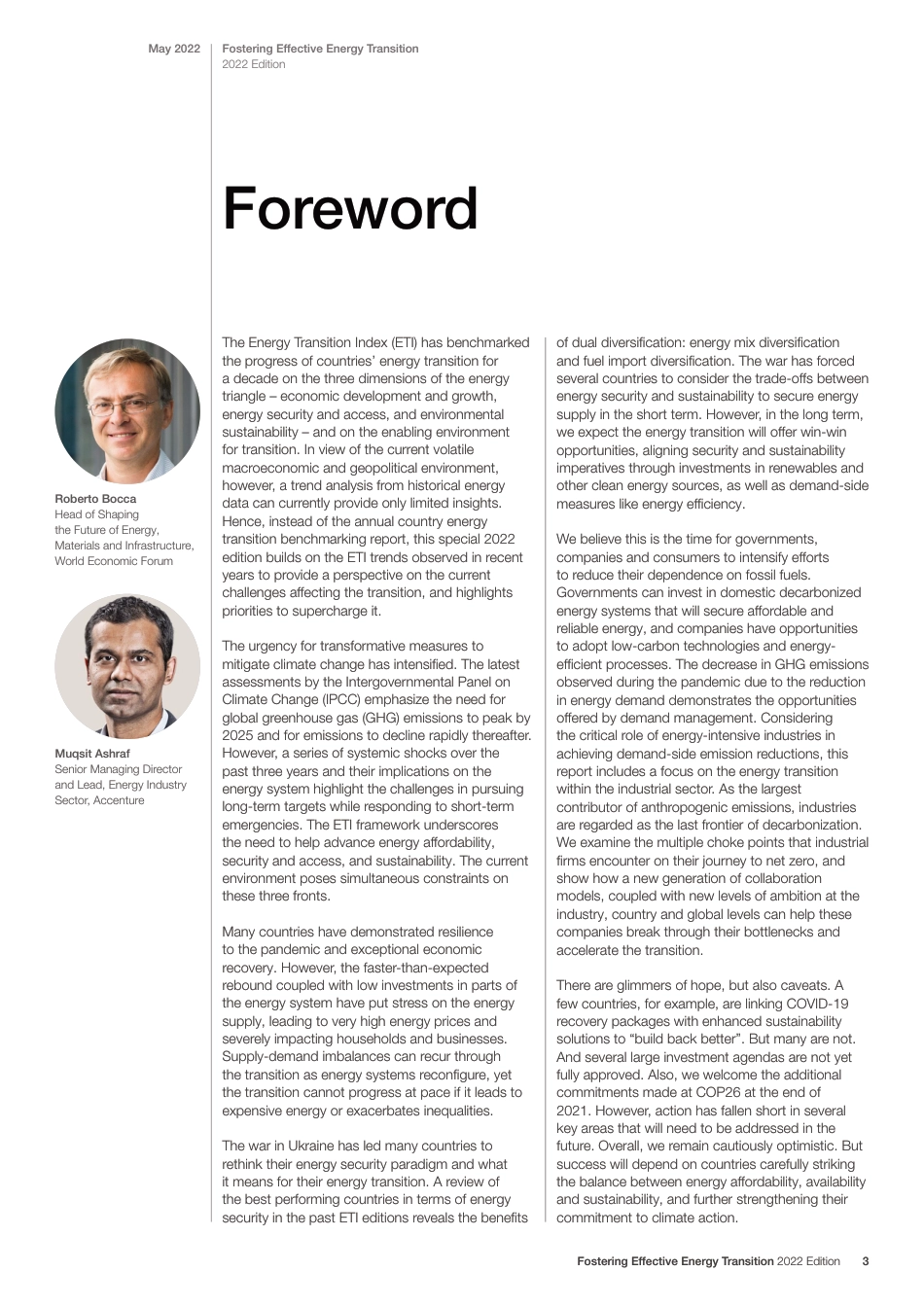Fostering Effective Energy Transition 2022 EditionI N S I G H T R E P O R TM A Y 2 0 2 2In collaboration with AccentureContentsForewordExecutive summary1 The energy transition under pressure1.1 Economic development and growth1.2 Energy security and access1.3 Environmental sustainability1.4 Transition readiness enablers2 Unlocking the net-zero transformation of industries2.1 No net zero by 2050 without industries2.2 Net-zero choke points: A call for multistakeholder collaboration2.3 Clearing the path to net zero with “next generation” partnerships2.4 Net-zero collaboration between customers and suppliers2.5 Net-zero collaboration between industry and cross-industry peers2.6 Net-zero collaboration between wider ecosystem stakeholders3 ConclusionAppendixContributorsEndnotes34691216192324293335384143444546Images: Getty Images, Unsplash, PexelsDisclaimer This document is published by the World Economic Forum as a contribution to a project, insight area or interaction. The findings, interpretations and conclusions expressed herein are a result of a collaborative process facilitated and endorsed by the World Economic Forum but whose results do not necessarily represent the views of the World Economic Forum, nor the entirety of its Members, Partners or other stakeholders.© 2022 World Economic Forum. All rights reserved. No part of this publication may be reproduced or transmitted in any form or by any means, including photocopying and recording, or by any information storage and retrieval system.Fostering Effective Energy Transition 2022 Edition2ForewordThe Energy Transition Index (ETI) has benchmarked the progress of countries’ energy transition for a decade on the three dimensions of the energy triangle – economic development and grow...



